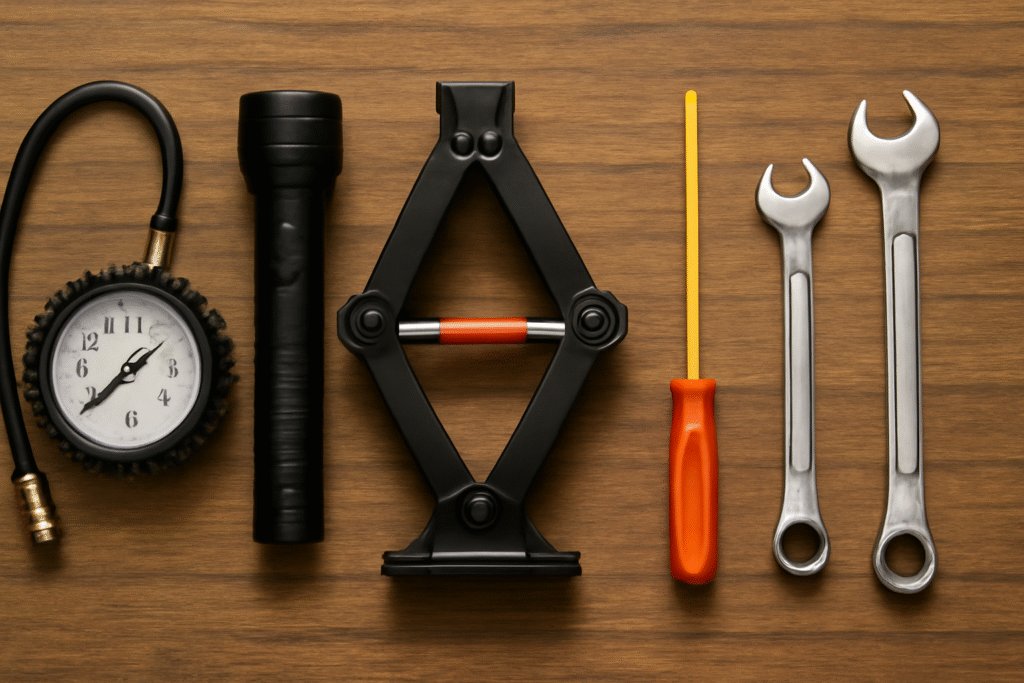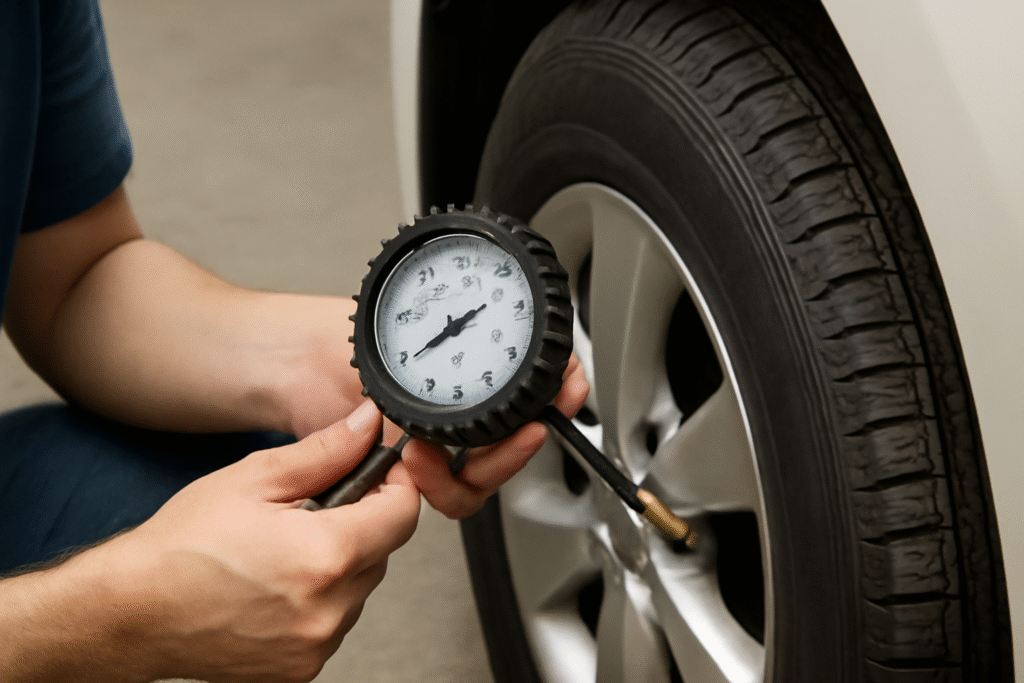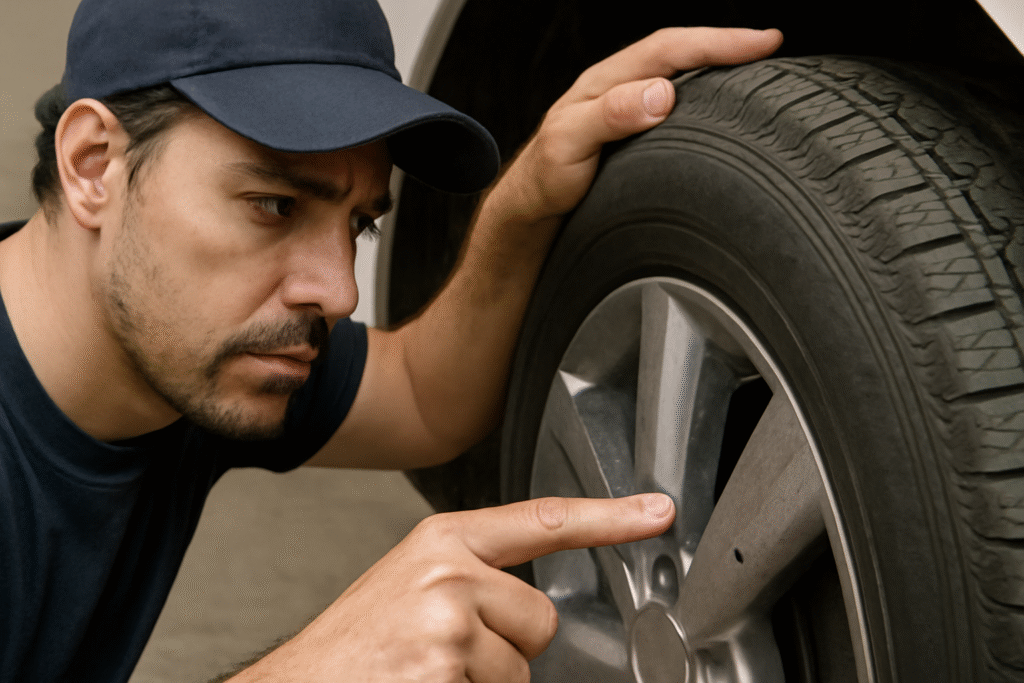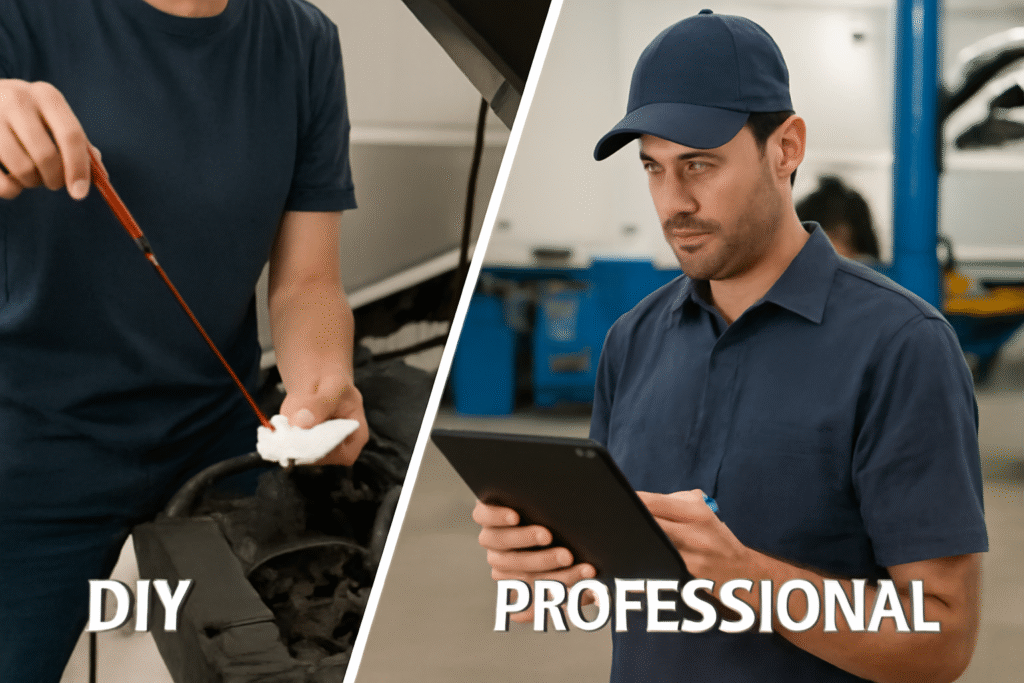
How to Perform a Car Inspection: A Step-by-Step Guide for Ensuring Your Vehicle's Safety and Reliability
Have you ever been caught off guard by a car breakdown or a surprise repair bill? 
In this guide, we’ll show you how to perform a car inspection—a simple yet powerful way to ensure your vehicle stays safe, reliable, and in top condition. Whether you’re a first-time car owner or just want to learn more about car maintenance, performing regular inspections can save you time, money, and stress.
Keep reading to discover easy steps that anyone can follow to catch potential issues early and drive with confidence. Let’s dive into the world of car inspections and start protecting your ride today!
Table of Contents
ToggleWhat is a Car Inspection?
A car inspection is a thorough check-up of your vehicle to ensure that it is operating safely and efficiently. Think of it as a health check for your car. Just like you would go to the doctor for a regular check-up, your car needs to be inspected to catch potential problems before they turn into costly repairs or safety hazards.
Why is a Car Inspection Important?
Performing regular car inspections helps keep your vehicle in top shape and can prevent small issues from snowballing into expensive fixes. It also ensures that your car meets safety standards, giving you peace of mind every time you hit the road. After all, your car is a big investment, and regular checks help protect that investment.
Key Benefits of Car Inspections:
- Prevent Unexpected Breakdowns: By spotting issues early, you can avoid being stranded on the side of the road.
- Improve Safety: A car inspection ensures that critical safety features like brakes, lights, and tires are functioning properly.
- Save Money: Early detection of problems means you can fix them before they become expensive repairs.
- Boost Vehicle Longevity: Regular inspections help extend the life of your car, keeping it running smoothly for years.
What Does a Car Inspection Include?
A typical car inspection covers everything from the engine and brakes to the tires and electrical systems. It’s not just about looking for big issues—sometimes the smallest problem can lead to bigger trouble down the road. Regular checks help you stay ahead of these potential issues.

When Should You Perform a Car Inspection?
Knowing when to perform a car inspection is just as important as knowing how to do it. Regular checks keep your vehicle in top shape and can prevent unexpected issues from popping up. So, let’s break down when you should perform a car inspection.
1. Regular Schedule: Every 6 Months or 6,000 Miles
The general rule of thumb is to perform a basic car inspection every six months or 6,000 miles, whichever comes first. This ensures that your car stays in good condition and helps you stay ahead of any potential problems. Regular checks are especially important for older vehicles, where issues can arise more frequently.
2. After Long Road Trips
If you’ve recently taken a long drive, especially on highways or through tough weather conditions, it’s a good idea to inspect your car afterward. Long trips can put extra strain on parts like the engine, tires, and brakes, so a quick inspection can catch any damage or wear.
3. When You Notice Something Strange
If you hear unusual noises, feel vibrations, or notice warning lights on your dashboard, it’s time to inspect your car. Early detection of issues—such as strange engine sounds or a sudden drop in braking power—can prevent larger, more costly repairs later on.
4. After an Accident
Even minor accidents or bumps can affect the performance of your car. After any type of collision, it’s important to inspect your vehicle for potential internal damage, misalignment, or broken components. Don’t just assume it’s fine – some issues might not be immediately visible.
5. Before Seasonal Changes
Each season brings different driving conditions, so it’s a good idea to inspect your car before heading into extreme temperatures. For example:
- Before winter: Check the battery, windshield wipers, and tires for proper performance in cold conditions.
- Before summer: Inspect the cooling system, air conditioning, and tires to handle the heat.

Tools and Supplies Needed for a Car Inspection
Before diving into your car inspection, it’s essential to have the right tools and supplies on hand. Don’t worry—most of the tools you need are easy to use and can be found at any auto parts store. Here’s a simple list of the basic items you’ll need to get started.
1. Tire Pressure Gauge
Checking tire pressure is one of the most important parts of a car inspection. Under-inflated tires can affect your car’s handling, fuel efficiency, and overall safety. A tire pressure gauge allows you to measure the air pressure in each tire and adjust it as needed.
2. Flashlight
A flashlight is crucial for inspecting hard-to-see areas under your car, like the engine bay or undercarriage. Make sure it’s bright enough to illuminate all the necessary parts of the vehicle during your inspection.
3. Car Jack and Jack Stands
To properly inspect your car’s tires, brakes, and suspension, you’ll need to lift your vehicle off the ground. A car jack allows you to safely lift your car, and jack stands are necessary to keep it secure while you’re working underneath. Always use both to avoid accidents.
4. Oil Dipstick
Checking the oil level and condition is essential for your car’s engine health. The oil dipstick lets you monitor the oil level and consistency, helping you spot potential issues such as leaks or the need for an oil change.
5. Wrenches and Screwdrivers
Basic wrenches and screwdrivers are handy for tightening loose parts, checking for fluid leaks, or removing covers for deeper inspections. A basic toolkit with adjustable wrenches is all you’ll need for most tasks.
6. Car Diagnostic Tool (Optional)
For more advanced inspections, a car diagnostic tool (OBD-II scanner) helps you read any trouble codes from your car’s computer. It’s perfect for diagnosing engine or electrical problems. While not required for basic checks, it’s a valuable tool for tech-savvy car owners.
7. Brake Fluid Tester (Optional)
If you’re checking the condition of your brake fluid, a brake fluid tester can tell you if the fluid is contaminated or low. This tool can save you from missing a potential issue that could affect your braking performance.

Step-by-Step Guide for Performing a Car Inspection
Now that you have the right tools and know when to inspect your car, it’s time to walk through a simple, step-by-step process for performing a complete car inspection. This guide is easy to follow, even for beginners, and will help you spot potential problems before they turn into major issues. Let’s get started!
1. Exterior Inspection
Start by walking around your car and visually inspecting the exterior. This is where you’ll look for any obvious issues that could affect your car’s safety and appearance.
- Tires:
- Check each tire for proper pressure using your tire pressure gauge. Make sure the tires are inflated to the correct PSI (found on the sticker inside the driver’s side door).
- Inspect the tread depth to ensure there’s enough grip. If the tread is worn down, it’s time to replace the tires.
- Look for bulges, cracks, or punctures in the tires that could lead to a blowout.
- Lights:
- Turn on your car’s lights (headlights, brake lights, and turn signals) to ensure they all work. Replace any burnt-out bulbs to stay safe on the road.
- Windshield and Wipers:
- Inspect the windshield for chips or cracks that could affect your visibility. If the damage is minor, get it repaired.
- Check your windshield wipers for wear and ensure they wipe the windshield effectively. Replace them if they streak or skip.
- Body and Paint:
- Look for dents, rust, or paint damage that could affect your car’s aerodynamics or cause further issues down the line.
2. Under the Hood Inspection
Now, let’s pop the hood and take a look at the heart of your vehicle: the engine. Regular checks here will help you avoid engine troubles down the road.
- Engine Oil:
- Use the oil dipstick to check the oil level. The oil should be at the right level, clean, and free of debris. If it’s low, top it up. If it’s dirty, it’s time for an oil change.
- Coolant:
- Check the coolant level to ensure it’s at the right mark (refer to the markings on the coolant reservoir). Low coolant can lead to engine overheating, which can be costly to fix.
- Battery:
- Inspect the battery terminals for signs of corrosion (white powdery substance). Clean off any corrosion with a mixture of baking soda and water.
- Check that the battery is secure and not loose.
- Belts and Hoses:
- Look for any cracks or fraying in the belts and hoses, as these can break and cause engine damage.
3. Interior Inspection
Next, let’s move inside the vehicle. This part is essential for checking safety features and making sure everything is functioning smoothly.
- Dashboard and Warning Lights:
- Start your car and make sure no warning lights (such as the check engine light) remain on. If a light stays illuminated, it might indicate an issue that needs attention.
- Brakes:
- Press the brake pedal to check its responsiveness. The pedal should feel firm and not sink to the floor. If it feels soft or spongy, it could be a sign of air in the brake lines or low brake fluid.
- Seatbelts:
- Check that all seatbelts are working properly, retract smoothly, and aren’t frayed or damaged.
- HVAC (Heating, Ventilation, Air Conditioning):
- Turn on your car’s AC and heating system to ensure the temperature controls are working properly. Pay attention to airflow and any unusual noises.
4. Brakes and Suspension Inspection
Now, let’s check the critical systems that affect your car’s handling and braking.
- Brake Pads:
- Check the thickness of the brake pads by looking at the visible parts near the wheels. If the pads are thin (less than 1/4 inch), they need to be replaced.
- Suspension:
- Press down on each corner of the car and release. The car should bounce up and down only once. If it bounces multiple times, it could indicate a suspension issue.
5. Test Drive
The final step is to take your car for a short test drive. This will help you spot any performance issues that might not be noticeable during a stationary inspection.
- Acceleration and Braking:
- Ensure the car accelerates smoothly and brakes without hesitation or strange noises.
- Alignment:
- Pay attention to whether the car pulls to one side. If it does, your wheels may be out of alignment and need adjustment.
- Unusual Sounds or Vibrations:
- Listen carefully for any strange noises, such as grinding or squeaking, and feel for any vibrations that might indicate an issue with the tires, suspension, or brakes.

Common Issues Found During Car Inspections
During a car inspection, there are a few common issues that many car owners encounter. Knowing what to look for can help you identify these problems early, saving you time and money. Let’s explore some of the most frequent issues found during car inspections and how to address them.
1. Tire Problems
Tires are one of the most common areas where problems arise. Keeping them in good condition is essential for your safety.
- Under-Inflated Tires:
Tires that are under-inflated not only reduce fuel efficiency but also increase the risk of blowouts. Make sure to check the pressure regularly and inflate them to the recommended PSI (found in your car’s manual or door jamb). - Uneven Tire Wear:
If your tires are wearing unevenly, it could be a sign of misalignment or suspension issues. This can lead to poor handling and quicker tire wear, so it’s important to get an alignment check if you notice this. - Cracked or Damaged Tires:
Look for visible signs of cracks, bulges, or punctures. These can compromise the tire’s integrity, making it unsafe to drive. If you find any damage, it’s time to replace the tire.
2. Brake Issues
Brakes are a critical safety feature, so any problems with them need to be addressed immediately.
- Worn Brake Pads:
Brake pads naturally wear down over time. If you notice squeaking or grinding sounds while braking, it’s likely time to replace your brake pads. Worn pads can reduce braking power and increase the risk of an accident. - Low Brake Fluid:
If your brake pedal feels soft or sinks to the floor, you might have low brake fluid. This could also indicate a leak in the brake lines, which should be inspected and repaired by a professional. - Vibrating or Pulling Brakes:
If your car pulls to one side or the brake pedal vibrates when applied, it may indicate issues with the brake rotors or uneven brake pad wear. These problems should be fixed quickly to ensure your brakes perform as they should.
3. Battery and Electrical Problems
Battery and electrical issues are another common problem, especially in older vehicles.
- Corroded Battery Terminals:
If you see white, powdery corrosion around the battery terminals, clean it off using a mixture of baking soda and water. Corrosion can reduce the battery’s efficiency and lead to starting problems. - Battery Not Holding Charge:
If your car struggles to start or the lights dim when you turn on the ignition, your battery may be failing. Check the charge and consider replacing the battery if it’s not holding a proper charge. - Electrical System Malfunctions:
Flickering lights or malfunctioning electrical systems could be a sign of wiring issues or a problem with the alternator. It’s a good idea to get this checked out by a professional to avoid being stranded with a dead battery.
4. Fluid Leaks
Fluid leaks are often easy to spot and can indicate various problems with your car’s internal systems.
- Oil Leaks:
If you notice spots of dark brown or black liquid under your car, it could be an oil leak. Low oil levels can lead to engine damage, so it’s important to address leaks promptly. - Coolant Leaks:
If your car is overheating or you see a greenish liquid under the car, it could be coolant leaking from the radiator or hoses. This can cause your engine to overheat, so get it fixed before it leads to severe engine damage. - Transmission Fluid Leaks:
Transmission fluid is usually red or pink. If you spot these colors under your car, your transmission might have a leak, which could lead to shifting problems or even transmission failure.
5. Suspension Issues
Your car’s suspension plays a key role in smooth handling and ride comfort. Worn suspension parts can lead to poor driving experience and safety concerns.
- Worn Shocks or Struts:
If your car bounces more than usual after driving over bumps, or if it feels unstable when turning, the shocks or struts may be worn out. This can affect your car’s handling and safety, so it’s best to get them replaced. - Misalignment:
If your steering wheel isn’t centered or the car pulls to one side while driving, it may be a sign that your wheels are out of alignment. This can lead to uneven tire wear and poor handling, so an alignment check is necessary.
6. Exhaust System Issues
Problems with your car’s exhaust system can affect engine performance and cause harmful emissions.
- Excessive Smoke:
If you see thick smoke coming from the exhaust pipe, it could indicate engine trouble. Blue smoke might mean oil is burning, while black smoke may indicate an overly rich fuel mixture. In either case, it’s important to get the engine checked. - Loud Noises:
A loud or rumbling noise from the exhaust system could indicate a hole or crack in the exhaust pipe. This may lead to reduced engine efficiency and increased pollution, so it’s worth fixing.

DIY vs. Professional Inspections
When it comes to car inspections, you might be wondering whether you should handle the process yourself (DIY) or leave it to the professionals. Both options have their advantages, depending on the issue at hand. Let’s break down the benefits of each to help you decide which route is best for you.
DIY Car Inspections: When You Can Do It Yourself
Performing a DIY car inspection is a great way to stay on top of your vehicle’s health and save money on basic checks. Many car owners find that with a few simple tools, they can tackle the essentials.
Advantages of DIY Inspections:
- Cost-Effective: You don’t need to pay for a mechanic’s time if you’re just doing a basic check-up.
- Convenience: You can inspect your car anytime without having to schedule an appointment.
- Confidence: Performing your own inspection gives you a better understanding of how your car works and helps you spot issues before they become major problems.
When to Perform a DIY Inspection:
- Tires: Checking tire pressure and tread depth is simple and doesn’t require professional expertise.
- Lights: Testing your headlights, brake lights, and turn signals is quick and easy.
- Fluid Levels: Checking engine oil, coolant, and windshield washer fluid is something anyone can do with a little guidance.
- Battery: Inspecting battery terminals for corrosion is a basic task that can be done without much effort.
If you’re comfortable using basic tools and following a guide, a DIY inspection can be quick, straightforward, and highly effective for maintaining your car’s basic functions.
Professional Inspections: When to Call a Mechanic
While DIY inspections are great for the basics, some issues require professional expertise. Mechanics have specialized tools and experience to identify problems that might be difficult for an untrained eye to spot.
Advantages of Professional Inspections:
- Expertise: Mechanics can diagnose and repair complex issues that you may not be able to identify yourself, such as engine or transmission problems.
- Advanced Tools: Professionals have access to advanced diagnostic equipment, like OBD-II scanners, that can read error codes from your car’s computer system.
- Comprehensive Checks: A professional inspection often goes beyond the basics and includes detailed assessments of your car’s overall condition, including the suspension, transmission, and exhaust system.
When to Visit a Mechanic:
- Engine and Transmission Issues: If you notice warning lights, hear strange noises, or experience poor performance, it’s best to visit a mechanic.
- Brake System Problems: If your brakes feel soft, make noise, or don’t work as expected, professional help is needed for safety reasons.
- Suspension or Alignment Issues: If your car pulls to one side or feels unstable, a mechanic can check for suspension and alignment problems that might not be obvious in a DIY inspection.
Professional inspections are especially important when you’re unsure about the severity of an issue, or if the problem involves intricate systems like the engine, transmission, or braking system.
The Best of Both Worlds: Combining DIY and Professional Inspections
For most car owners, a combination of DIY and professional inspections is the best approach. Start with a regular DIY inspection to check for common issues and maintain basic vehicle health. Then, take your car to a professional for more thorough checks or if you notice any warning signs that require advanced expertise.
This approach allows you to stay on top of routine maintenance while ensuring that more complex problems are handled by a trained expert.

How to Keep Track of Your Car Inspections
Keeping track of your car inspections is essential for maintaining your vehicle’s health and ensuring that you don’t miss any necessary check-ups. Whether you’re handling the inspections yourself or working with a mechanic, a good tracking system will help you stay organized and on top of things. Here’s how you can easily keep track of your car inspections.
1. Create an Inspection Log
A simple logbook or spreadsheet is a great way to track all of your car inspections. You can jot down the date of each inspection, what you checked, and any issues you found. This allows you to refer back to past inspections and stay informed on your car’s overall health.
What to Include in Your Log:
- Date of Inspection
- Mileage: Track how many miles your car has driven at the time of the inspection.
- Items Checked: List the parts of the car you inspected (e.g., tires, engine oil, brakes, etc.).
- Problems Found: Make note of any issues discovered and what was done about them (e.g., replaced tire, added coolant).
- Next Scheduled Inspection: Set a date or mileage marker for the next inspection.
2. Use Mobile Apps
If you prefer a more digital approach, there are several mobile apps designed to help you track your car maintenance and inspections. These apps often let you log inspections, set reminders, and even track your car’s service history. Some popular options include apps like Car Maintenance Reminder and AutoCare.
Benefits of Using Apps:
- Automatic Reminders: Set up alerts for when your next inspection is due based on mileage or time.
- Detailed History: Easily access a complete record of past inspections and repairs.
- Convenient Tracking: Keep everything on your phone, so it’s always with you when you need it.
3. Set Calendar Reminders
If you prefer a simple approach, setting up reminders in your calendar can be a helpful way to stay on track. You can set recurring reminders for every six months or 6,000 miles, or based on other schedules like seasonal changes. This will ensure you never forget to inspect your car.
Tip: Sync your car inspection reminders with your phone’s calendar app, so you get a pop-up alert when it’s time to perform an inspection.
4. Keep All Receipts and Service Records
Whether you do the inspection yourself or take your car to a mechanic, keeping receipts and service records is crucial. These documents act as proof of the maintenance work you’ve done and can be useful for future inspections or if you sell your car.
What to Keep:
- Receipts from inspections or repairs: Keep records of any parts replaced or services provided.
- Mechanic notes: If a professional performed an inspection, ask for a report of what was checked and any issues found.
5. Track Repairs and Maintenance
In addition to tracking inspections, keep track of any repairs or maintenance performed on your vehicle. Having a record of when parts were replaced, when you had an oil change, or when you last had your brakes checked can give you a clear idea of what needs to be done next.
How to Track:
- Create a repair log: Add this to your inspection log or app, so you can see exactly what was done to your car over time.
- Set reminders for future services: For example, after an oil change, set a reminder for the next one based on mileage or time.

Performing regular car inspections is a simple yet effective way to ensure your vehicle stays safe, reliable, and roadworthy. By following the step-by-step guide and keeping track of your inspections, you can spot potential issues early, avoid costly repairs, and extend the life of your car.
Whether you choose to tackle inspections yourself or rely on a professional for more complex checks, staying proactive about car maintenance is key to driving with confidence. With the right tools, a little time, and attention to detail, you’ll be well on your way to maintaining a car that’s always ready for the road.
So, why wait? Start inspecting your car today, and enjoy peace of mind knowing you’re taking care of your vehicle every step of the way. Stay safe, stay informed, and happy driving!
Frequently Asked Questions (FAQ)
1. How often should I perform a car inspection?
It’s recommended to perform a car inspection every 6 months or 6,000 miles, whichever comes first. Regular checks help you catch minor issues before they become major problems, keeping your car running smoothly and safely.
2. What should I check during a DIY car inspection?
During a DIY inspection, you should check the tires, brakes, engine oil, coolant, battery, and lights. You should also inspect the windshield, wipers, and belts for wear and tear. This simple check can help prevent most common car issues.
3. Can I perform a car inspection without any mechanical knowledge?
Yes! Basic car inspections don’t require advanced mechanical knowledge. With the right tools and a step-by-step guide, even beginners can check important parts like tires, oil, and lights, ensuring their car stays safe and reliable.
4. How do I know if my brakes need to be replaced?
If your brakes make squeaking or grinding sounds, feel soft or unresponsive, or cause your car to pull to one side when braking, it may be time to replace the brake pads. If you’re unsure, have a professional mechanic perform a brake inspection.
5. Why is checking tire pressure important during a car inspection?
Tire pressure affects your car’s handling, fuel efficiency, and safety. Under-inflated tires can lead to poor fuel economy and increased wear, while over-inflated tires can cause a blowout. Regularly checking tire pressure ensures optimal performance and safety.
6. What tools do I need for a basic car inspection?
For a basic car inspection, you’ll need a tire pressure gauge, flashlight, car jack, wrenches, and an oil dipstick. These tools allow you to inspect common areas like tires, oil, and brakes safely and effectively.
7. How can I keep track of my car inspections?
You can track your car inspections using a logbook, a mobile app, or calendar reminders. Keeping a record of the inspection dates, mileage, and any issues found helps you stay organized and ensure that no checks are missed.
8. When should I take my car to a professional mechanic for an inspection?
If you notice warning lights, hear unusual noises, or feel performance issues such as poor braking or engine trouble, it’s time to consult a professional mechanic. A mechanic can perform a more thorough inspection and address complex problems that are difficult to spot on your own.









